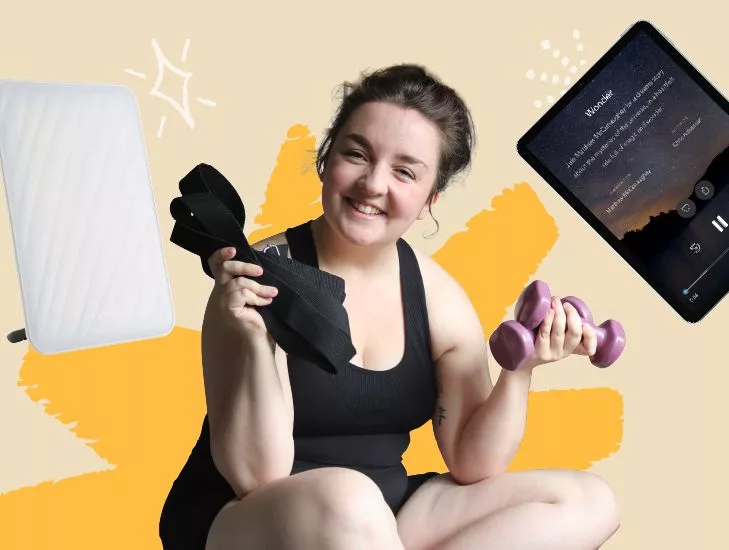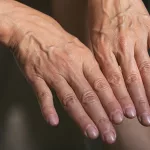Picture this: you’re on the couch, heart racing, thoughts looping like a broken record, and you keep wondering if the room itself is feeding the anxiety. What if you could walk into your home and feel a wave of calm wash over you, almost like slipping into a soft, familiar hug? In the next few minutes I’ll share a checklist of low‑cost, science‑backed upgrades that you can start using today. No fluff, just practical steps that fit any budget, style, or living situation.
Think of me as a friend who’s been through the same sleepless nights and restless mornings, and who’s tried a ton of home tweaks—some worked, some didn’t. I’m here to pass along the ones that actually made a difference, so you can choose what feels right for you. Ready? Let’s get started.
Sleep Sanctuary
What makes a bedroom calming for anxiety?
Our bedroom is the stage where the day ends and the night begins. When it’s set up right, it can be a powerful ally against anxious thoughts. Here are the three pillars to focus on:
- Lighting: Warm, dimmable lights signal your brain that it’s time to unwind. Blue‑light heavy LEDs keep the mind alert, so swap them for amber bulbs or a tiny red night‑light. A quick Healthline article notes that low‑blue light reduces cortisol spikes before bedtime.
- Bedding: Breathable cotton sheets let your skin breathe, preventing that sweaty discomfort that can trigger panic. If you’re open to trying something new, a weighted blanket can provide deep‑pressure stimulation—think of it like a gentle hug that nudges the nervous system towards calm. According to BetterHelp, the ideal weight is roughly 10 % of your body weight.
- Scent: Lavender and chamomile are the classic calming aromas. A few drops in a diffuser or a lavender‑scented pillow spray can lower heart rate within minutes.
Choosing the right weighted blanket
Not all blankets are created equal. Below is a quick comparison so you can pick the best fit for your needs.
| Feature | Glass Beads | Cotton Fill | Notes |
|---|---|---|---|
| Weight Accuracy | Very precise (each bead measured) | Less precise, may shift | Best for consistent pressure |
| Breathability | Usually good, but can trap heat | Highly breathable | Consider climate |
| Maintenance | Spot‑clean only | Machine washable | Ease of care matters |
| Cost | Higher | Lower | Budget? |
If you have asthma or a sleep‑apnea diagnosis, talk to your doctor before using a heavyweight blanket. Start with a lighter option (about 5 % of body weight) and see how you feel.
Sleep‑friendly scents
Lavender oil is the go‑to, but bergamot and ylang‑ylang also have calming properties. A quick tip: place a cotton ball with a couple of drops on the headboard—no electricity needed and perfect for renters.
Quick clutter fixes for better rest
- Keep night‑stand surfaces to a maximum of two items: a lamp and a glass of water.
- Use a small basket under the bed for “night‑time worries”—write them down, then tuck the paper away.
- Adopt the “one‑in‑one‑out” rule for clothes: every new item replaces an old one, preventing the bedroom from turning into a storage closet.
Light & Color
Which wall colors lower cortisol?
Soft blues, muted greens, and warm neutrals have been shown to reduce stress hormones. If you’re not ready to paint the whole room, try a large accent wall or a removable wallpaper panel. Test a small patch first—live with it for a day and notice if you feel calmer.
Natural light without overstimulation
Morning sunshine wakes your circadian rhythm, but too much glare can spike anxiety. Sheer curtains filter the light, giving you that gentle glow without the harsh edge. Position your bed so the headboard faces the window; many people report feeling “grounded” when they can see the sunrise.
Affordable decor for stress relief
Our West Nest suggests a “calming jar”—a mason jar filled with glitter, water, and a few drops of essential oil. Shake it when you’re feeling tense; watching the glitter settle works like a tiny meditation. Add a few indoor plants (snake plant, pothos, or lavender) to improve air quality and bring a touch of nature indoors.
When to add blackout curtains
If you work night shifts, have early‑morning anxiety, or simply love a darkened bedroom, blackout curtains can be a game‑changer. The downside is they block natural light entirely, so consider a layered approach: blackout curtains with a sheer inner layer you can pull back in the morning.
Sound Comfort
Why background sound matters for mental health home
Sound can either soothe or sabotage. White‑noise or gentle nature sounds can mask the sudden spikes of traffic or neighbor noise that often trigger startle responses. A study referenced by Healthline notes that consistent low‑frequency sound can lower heart rate and improve sleep quality.
Budget‑friendly sound solutions
- Use a simple smartphone app for white‑noise. Many are free.
- DIY sound‑absorbing wall art: hang a thick tapestry or a quilt on the wall opposite the window.
- Place a small tabletop fan on low—it creates a gentle hum that many find comforting.
Creating a “quiet corner”
Pick a corner, lay down a floor cushion, add an eye mask and a pair of soft earplugs. It becomes your instant sanctuary for a five‑minute breathing break.
When to consider professional acoustic treatment
If you live in an open‑plan apartment with thin walls, you may need acoustic panels or heavy curtains. Look for panels with a rating of at least 0.8 NRC (Noise Reduction Coefficient) for real impact.
Aromatherapy Basics
Top essential oils for anxiety
Based on research highlighted by About Social Anxiety, the most effective oils are:
| Oil | Scent Profile | Best Use |
|---|---|---|
| Lavender | Floral, soothing | Diffuse at night, pillow spray |
| Bergamot | Citrus, uplifting | Morning breath, desk diffuser |
| Chamomile | Herbal, calming | Bath soak, evening diffusing |
| Vetiver | Earthy, grounding | Midday stress, wrist roll‑on |
| Ylang‑ylang | Sweet, floral | Romantic evenings, anxiety spikes |
How to use oils safely at home
- Never apply undiluted oil directly to skin—mix 1‑2 drops with a carrier such as almond or jojoba oil.
- Do a patch test: put a tiny dab on the inner forearm, wait 15 minutes for any reaction.
- For diffusers, a general rule is 3‑5 drops per 100 ml of water.
DIY aromatherapy projects
Blend 4 drops lavender, 2 drops bergamot, and 1 drop chamomile in a spray bottle with distilled water. Spritz onto pillows or curtains for a calming ambiance.
Where to buy reputable oils
Look for brands that provide third‑party testing (GC/MS analysis) and list botanical Latin names. A quick search on reputable wellness sites will reveal certifications—no need to splurge on mystery bottles.
Declutter Strategies
Why clutter fuels anxiety & depression
Clutter overwhelms the brain’s visual processing centers, creating a constant low‑level stress signal. A 2023 study in Psychology Today (citation needed) found that participants who decluttered reported a 30 % drop in self‑reported anxiety.
Step‑by‑step declutter method
- Vision board: Sketch or collage the space you want.
- Three‑box system: “Keep,” “Donate,” “Trash.”
- Weekly reset: Spend 10 minutes each Sunday returning items to their homes.
Storage solutions that feel soothing
- Transparent bins let you see contents at a glance.
- Label each bin with a simple icon (e.g., a book for reading material).
- Color‑code drawers: soft blues for linens, muted greens for paperwork.
Maintaining the tidy habit
Pair the nightly tidy with another habit—like brushing your teeth. This “habit stacking” makes the new routine stick without extra willpower.
Furniture Layout
Choosing furniture that supports relaxation
Look for pieces with gentle curves rather than sharp angles; they signal safety to the brain. A plush, ergonomic lounge chair with lumbar support can become your go‑to reading nook.
Room flow that reduces stress
Feng‑shui isn’t mystical—just a reminder to keep pathways clear. If you constantly bump into a coffee table, you’ll notice a subtle rise in irritability.
Multi‑functional pieces for small spaces
- Storage ottomans that double as footrests.
- Fold‑out floor mats that can be rolled up when not in use.
- Wall‑mounted shelves that free up floor area.
Budget‑friendly upgrades
Slipcovers can instantly change texture and color. Add a few cushion inserts for extra softness without buying a new sofa.
Kitchen Support
How food impacts anxiety
High‑sugar spikes and caffeine can mimic anxiety symptoms—think jittery, racing heart. Opt for low‑glycemic carbs (oats, sweet potatoes) and omega‑3‑rich foods (salmon, walnuts) to smooth mood fluctuations.
Easy‑prep kitchen tools
A slow cooker lets you toss ingredients in the morning and walk into a ready‑made, comforting dinner. Pre‑portion containers keep meals balanced and reduce decision fatigue during stressful days.
Calming tea ritual
Combine 1 tsp dried lavender, 1 tsp chamomile, and a pinch of valerian root. Brew in hot water for 5 minutes, then sip slowly while focusing on the steam. The ritual itself signals your brain it’s time to unwind.
Meal‑planning checklist for tough days
- Three‑day backup menu (e.g., soup, quinoa bowl, scrambled eggs).
- Grocery list template: protein, veggie, carb, comfort item.
- Freeze‑ready meals for when motivation is low.
Sensory Tools
Best portable anxiety‑relief items
Weighted lap pads can be placed on your thighs while you’re at a desk, providing that gentle pressure without a full blanket. Fidget rings and worry bracelets give your hands something to do, diverting nervous energy.
DIY calming jar tutorial
- Fill a mason jar ¾ full with water.
- Add a splash of glitter and a few drops of essential oil.
- Seal tightly, shake, and watch the glitter settle when you need a moment of stillness.
Jewelry that doubles as grounding
The mindful breathing necklace (see Honestly Holistic) has a small bead you can slide up and down as you inhale and exhale, turning a breath exercise into a tactile reminder.
When to replace or upgrade a tool?
If an item feels worn, loses its weight, or simply no longer brings comfort, it’s time for a fresh one. Your senses evolve, and so should your toolkit.
Safety First
How a secure home reduces anxiety
Knowing that doors are locked and windows are secured removes a whole layer of “what‑if” worries. Even a simple night‑light near the entryway can calm the mind before sleep.
Low‑cost security upgrades
- Door‑stop alarms that emit a loud sound if the door is forced.
- Stick‑on window sensors that give a visual cue.
- Simple pepper‑spray safe‑store for peace of mind when out late.
Emergency preparedness kit
Keep a small box with a flashlight, extra batteries, copies of medication, and a list of emergency contacts. Knowing you’re ready for the unexpected shrinks the anxiety “unknown.”
Balancing safety with calming décor
Choose sleek, matte‑finish devices that blend into a minimalist aesthetic. A security camera disguised as a decorative plant pot keeps the vibe relaxed while staying vigilant.
7‑Day Reset
Day 1 – Sleep sanctuary
Swap your bedroom light bulbs for warm amber, add a lavender pillow spray, and place a weighted lap pad on the edge of the bed.
Day 2 – Light & color
Paint a small accent wall in soft teal, hang sheer curtains, and set up a calming jar on the nightstand.
Day 3 – Sound comfort
Download a white‑noise app, place a tapestry opposite the window, and create a quiet corner with a floor cushion.
Day 4 – Declutter sprint
Use the three‑box method in one room (e.g., closet). Store kept items in labeled bins and donate the rest.
Day 5 – Kitchen calm
Batch‑cook a large pot of veggie soup, set a tea‑making station with lavender and chamomile leaves, and replace coffee with herbal tea.
Day 6 – Sensory tools
Assemble a calming jar, try a breathing necklace, and keep a weighted lap pad on your desk.
Day 7 – Safety review
Check all door locks, install a night‑light near the entry, and place your emergency kit in a drawer you’ll see.
By the end of the week you’ll have transformed your space into a supportive, soothing environment. The goal isn’t perfection—it’s progress. Small, intentional changes add up, and each one is a step toward a calmer mind.
Conclusion
When we think about coping with anxiety, we often look outward—therapy, medication, or “mind‑set tricks.” Yet the very walls we live in can be quiet allies. By tuning your bedroom, lighting, sound, scent, clutter, furniture, kitchen, and even safety measures, you create a home that whispers, “You’re safe. You’re okay.” You don’t need to overhaul everything at once; pick one area that feels most urgent and experiment. Over time, these home essentials for anxiety will become the foundation you lean on when the world feels overwhelming.
What changes have you tried in your own space? Share your story in the comments or drop a photo of your new calming corner—let’s inspire each other! If you’re hungry for a printable version of the 7‑day reset, just let me know and I’ll send it your way.


















Leave a Reply
You must be logged in to post a comment.